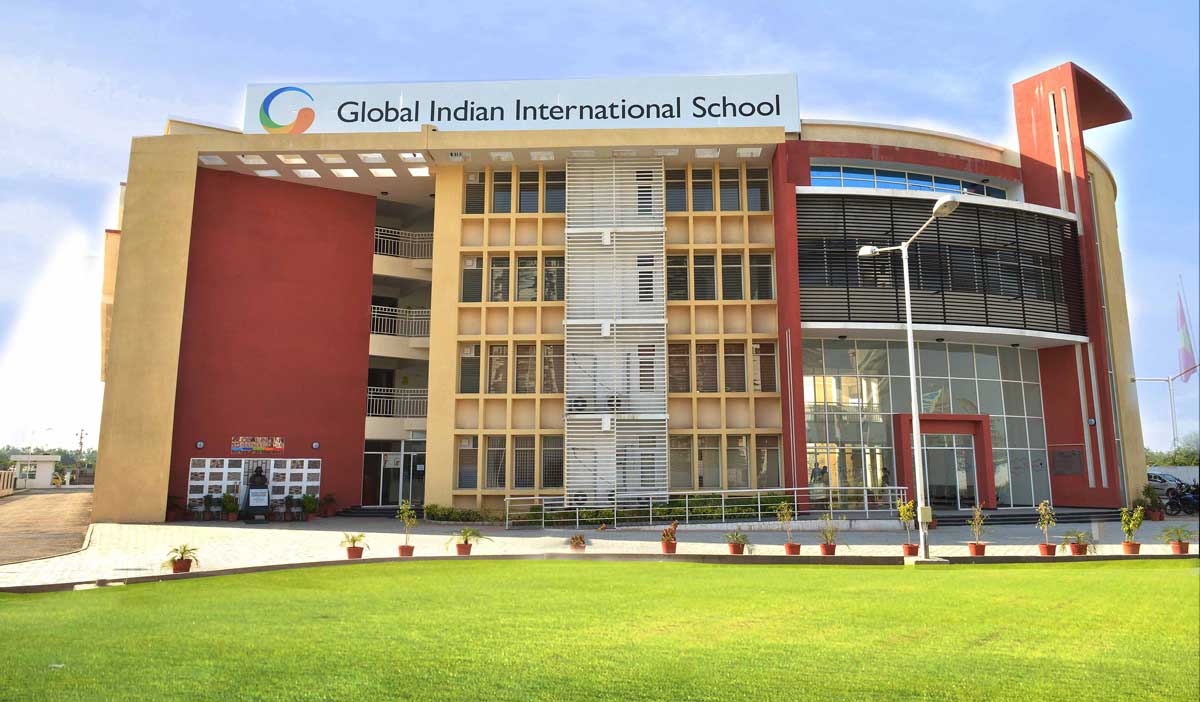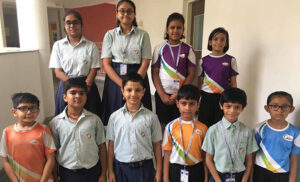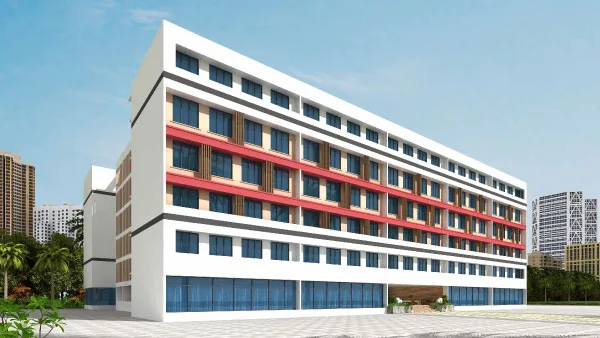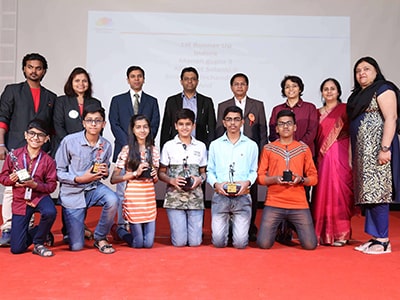Download our FREE Academic Calendar now! 📚 Start your child’s journey to success.
Read this Blog Post to understand the CBSE curriculum and its impact on secondary school students. Also understand the importance of admitting your child into an Ahmedabad CBSE school.
A popular school board in India is the Central Board of Secondary Education (CBSE). It’s the country’s national board of education, or NEA for short. What makes it a favorite among students and their parents?
It was recreated on July 1, 1962. New Delhi is the Board’s headquarters. It is an independent body that is under the complete jurisdiction of the Indian government.
CBSE has set a high standard for education in India for all these years and continues to do so. CBSE’s educational policies have had a major impact on the country’s education system.
CBSE and Its Widespread Curriculum
In addition to Kendriya Vidyalayas, Jawahar Navodaya Vidyalayas, private schools, and the vast majority of schools sanctioned by the Indian government, CBSE is affiliated with all of these schools. To perform its tasks efficiently and maintain educational standards across the country, the Board decentralized its administrative structure.
There are now several regional offices located throughout the country to better serve the associated institutions. In addition, the Regional Offices are closely monitored by the headquarters in New Delhi at all times.
CBSE School System
A consolidated education system, regulated by one apex authority, ensures uniformity for all CBSE students across India, according to the CBSE. A diploma issued by the Central Board of Secondary Education is recognized throughout the country, in all colleges and academic institutions of higher learning.
It is possible to study hard and build abilities at the same time using CBSE’s education structure. Due to its compact layout, the CBSE syllabus is easy to understand compared to other boards. It supplies a youngster with the basic and broad knowledge needed to progress in his or her education.
As a result, CBSE students have an advantage over other pupils when it comes to cracking the major engineering and medical admission tests following class 12th. People who can’t afford books or private tuition will benefit from its online education platform.
Study materials and free help from expert teachers are widely accessible online. It’s easier for pupils to study abroad now that the CBSE board is internationally recognized.
Objectives of CBSE Board
● Exam conditions and public examinations at the conclusion of class 10 and class 12 have to be prescribed.
● Successful candidates from the connected schools will be awarded certificates of completion.
● Assisting students whose parents work in transferable occupations to complete their educational needs.
● Foster a variety of academic and non-academic abilities and skills that may assist pupils in a successful transition from high school to college life.
● Affiliate institutions for the purpose of conducting examinations and raising national academic standards.
CBSE Secondary School and How Important They Are for Competitive Exams
1. Popularity and Preference
CBSE is one of India’s most popular boards. Additionally, it incorporates additional subject content into the national curriculum. All India Secondary School Examination (AISSE) (Class X) and the All-India Senior School Certificate Examination (AISSCE) are administered by the board (Class XII).
There are now a number of private schools that are offering the CBSE, as many private sector professionals are shifting from one location to another. As a result, the CBSE curriculum is extremely regimented, predictable, and controlled. In accordance with this syllabus, all national entrance exams are administered.
2. Maintains Uniformity Across Schools
To serve government personnel with transferable employment, CBSE was granted recognition by the NCERT (National Council for Educational Research and Training). CBSE operates a chain of central schools (Kendriya Vidyalayas). In India, CBSE is linked with several secondary schools. Candidates from CBSE-affiliated schools as well as non-affiliated schools may sit for the exams.
3. Compact Curriculum
As compared to other boards, the CBSE syllabus is easier due to fewer topics and a compact framework. CBSE’s secondary school curriculum does not require the study of environmental education.
Physics, chemistry, and biology are under the general category of science, while history, geography, and civics fall under the category of social sciences, according to the National Science Foundation.
An education certificate issued by the Central Board of Education is recognized throughout the country, in all colleges and academic institutions of higher learning. According to CBSE, the curriculum is concentric.
4. Medium of Instruction
The CBSE accepts both English and Hindi as instructional languages. During the past decade, the CBSE board has prescribed a certain teaching approach. Learning through experience and experimentation, rather than one-way teaching, has become increasingly important, as Competitive exams in India are a top priority.
5. Universally Recognized
CBSE has developed a Foreign Schools Cell (FSC) to assist secondary schools outside of India. The Central Board of Secondary Education also enjoys a favorable reputation with international universities and colleges.
CBSE schools may be found in Singapore, Russia, Africa, and the Middle East as proof. CBSE is an internationally recognized board, so if a student wants to study overseas, that won’t be a problem.
What Do CBSE Secondary Schools Aim To Do?
Their aim is to make learning and teaching more student-friendly. Exams and evaluation systems need to be improved in order to get fair outcomes. By including job-related inputs, they may encourage students to develop their skills.
The teachers and administrators are regularly updated on their teaching skills through various service training programs and workshops. According to CBSE’s mission statement, the school’s academic program is coordinated with extracurricular activities that might help students develop their skills.
CBSE Secondary School in Ahmedabad
It is home to the prestigious Ahmedabad Education Society. AES was founded by a group of significant businessmen and community leaders. There were 300 active members then.
Pre-independence, textile mill owners and others banded together to raise money and build colleges. AES, which has been in existence for 86 years, is Ahmedabad’s educational hub.
Today Ahmedabad has more than one prestigious institute which makes it an excellent choice to consider for your child’s education.
You must be looking for a school with a child-centered curriculum when choosing a new school. Your child’s education should be transformative if you want him or her to grow properly.
In the best Ahmedabad CBSE school, you have the Primary Years Program (PYP) which helps your child to move up the ladder with ease. Many international schools are adopting the IB programs too, which is rising in popularity among students. All learning stages are covered in a CBSE course.
With respect to international standards, it is completely adaptable and versatile. This ensures that your youngster will be exposed to a variety of disciplines. As a parent, you should be aware that teachers use modern technologies to enhance learning.
As an alternative to books, some Ahmedabad CBSE schools utilize activities, games, and films instead. Making learning enjoyable allows kids to grasp concepts quickly.
In Conclusion
From the moment a child begins school, parents are faced with the challenge of picking the right school. Children’s early development and exposure to our education system are greatly influenced by the school board they attend.
As mentioned before, In India, CBSE is the syllabus used for most competitive admission tests such as IIT-JEE and PMT. Whether or not your child decides to appear for a competitive exam, having a CBSE education as their foundation is beneficial.
As a matter of fact, the CBSE syllabus is used by 90 of India’s top 100 schools. As a result, CBSE students make up 60% of the IIT intake, while ICSE students make up 10%. 28 percent of all state boards and 2 percent of other schools.
An Ahmedabad CBSE school can pave the way for success in your child’s life.





































